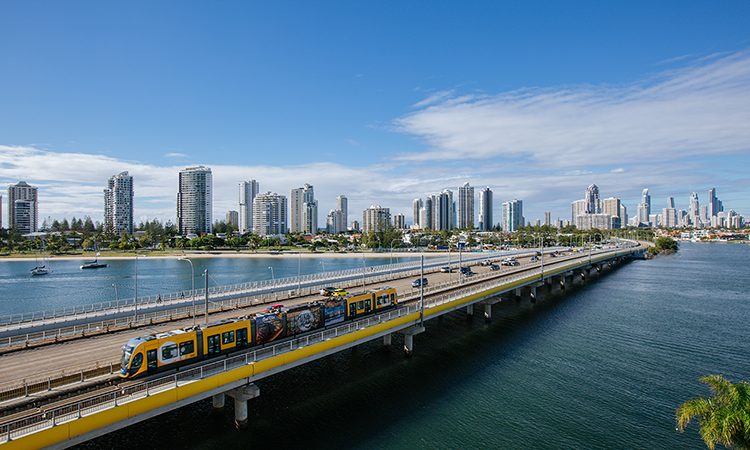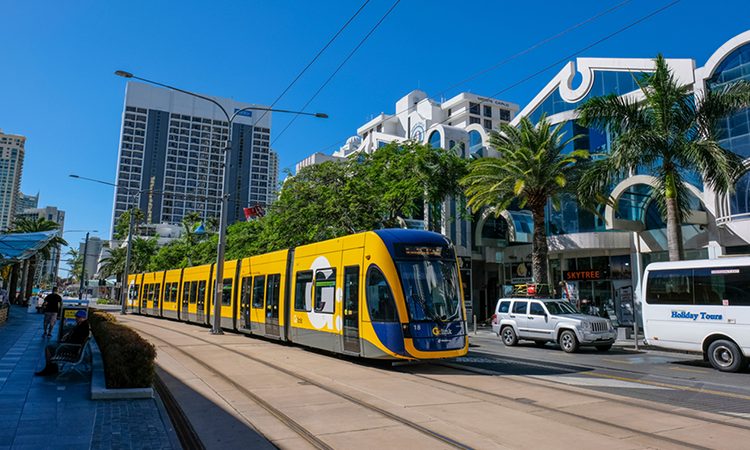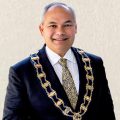Mayors’ Series: Gold Coast City Transport Strategy 2041 – A vision for sustainable transportation
- Like
- Digg
- Del
- Tumblr
- VKontakte
- Buffer
- Love This
- Odnoklassniki
- Meneame
- Blogger
- Amazon
- Yahoo Mail
- Gmail
- AOL
- Newsvine
- HackerNews
- Evernote
- MySpace
- Mail.ru
- Viadeo
- Line
- Comments
- Yummly
- SMS
- Viber
- Telegram
- Subscribe
- Skype
- Facebook Messenger
- Kakao
- LiveJournal
- Yammer
- Edgar
- Fintel
- Mix
- Instapaper
- Copy Link
Posted: 24 March 2023 | Tom Tate - City of Gold Coast | No comments yet
For Intelligent Transport’s new Mayors’ Series, publishing exclusively in our magazine, Tom Tate, Mayor of the City of Gold Coast in Queensland, shares his thoughts on the public transportation system of the fastest-growing city in Australia. With the city facing challenges due to an increasing population and a heavy reliance on cars, Mayor Tate discusses how the Gold Coast City Transport Strategy 2041 will work to address these challenges and take advantage of the opportunities that the city has to offer.


Credit: City of Gold Coast
When it comes to public transport, it could be strongly argued that cities such as London, Manchester, Leeds and Liverpool have largely got it right.
These modern cities have an efficient mix of dedicated transport lanes, integrated bus services and overland rail, as well as underground lines, extensive cycle networks for people commuting by bicycle or electric transport modes and other processes including congestion taxes and toll ways.
In 2022, I met with Transport for London (TfL) officials and was impressed with the leading-edge technology in place to deal with public transport throughout Greater London.
Our Australian capital cities, such as Sydney and Melbourne, with populations exceeding four million, have also progressed their public transport systems to a stage where millions of commuters board trains, ferries or buses on a daily basis. It all seems to work, bar the odd union strike!
So, where does that leave the Gold Coast, Australia?
Geographically, the key challenge for urban transport planners is that we are a linear city – almost 80km in length, with the majority of residents wanting to live near our famous beaches”
We are Australia’s sixth largest city, with a population of almost 700,000. In UK terms, that’s not impressive, but we are currently the fastest growing city in Australia.
Geographically, the key challenge for urban transport planners is that we are a linear city – almost 80km in length, with the majority of residents wanting to live near our famous beaches.
Being a linear city makes it hard to form a central transport hub where services can rapidly feed to and depart from.
We are also heavily reliant on cars, as this once quiet tourist town was largely a retirement destination for Aussies wanting a sea change. All of that has now changed, with young families pouring into the area, creating more school drop-offs, sporting club commutes and vehicle activity across all of our local and arterial roads.
What are we doing about public transport?
Our current Gold Coast City Transport Strategy 2031 has served us well, but it is time to consider a longer-term view to ensure that we are well prepared for the future”
Our current Gold Coast City Transport Strategy 2031 has served us well, but it is time to consider a longer-term view to ensure that we are well prepared for the future. Since the 2031 strategy’s development in 2011–12, the pace of change in our city and the transport industry has been extraordinary.
By 2041, it is expected that more than one million people will call the Gold Coast home. This population growth will mean more jobs and more visitors. Growth brings opportunities and challenges that we need to plan for and manage.
The development of the Gold Coast City Transport Strategy 20411 responds to these challenges and opportunities. The refreshed strategy focuses on a robust, contemporary and integrated approach to delivering a transport network that meets the needs of our community.
Each level of government (local, state and federal) has different responsibilities in relation to the transport network. For example, air travel and airports fall under the federal government, while public transport – including buses, trains and the Gold Coast Light Rail – are the responsibility of the state government, along with the state road network and infrastructure, including the future Coomera Connector.
The City of Gold Coast Council is responsible for local roads, bus stops, parking, active travel, traffic management and local freight routes and interchanges. We also actively partner on projects with the state government to ensure that the needs of our community are clearly communicated and advocated for.
However, the pace of change in the city, and more broadly in the transport industry, has been extraordinary. Given the scale of these changes, the development of the Gold Coast City Transport Strategy 2041 is recognising and dealing with the challenges and opportunities that come with these trends and emerging community requirements.


Investing in our light rail network
It was the City’s first Transport Strategy (1998) that identified that a contemporary mass transit system – in the form of a light rail network – would be required to cater for the sustainable movement of residents, workers and visitors to the Gold Coast”
Historically, it was the City’s first Transport Strategy (1998) that identified that a contemporary mass transit system – in the form of a light rail network – would be required to cater for the sustainable movement of residents, workers and visitors to the Gold Coast. Thus, the motivation was to start to move towards a future state where private vehicle use is reduced.
Strong advocacy from our council resulted in a three-way funding agreement – council, state and federal – to deliver Stage 1 of the Gold Coast Light Rail system. The first trams rolled out in early 2014. Stage 2 of the system was delivered in time for the 2018 Commonwealth Games, linking light rail with the in-land heavy rail system. Daily patronage at the time was around 30,000 people, with demand increasing to around 110,000 passengers per day during the Commonwealth Games. Since then, the council has led a range of business cases which is now seeing Stage 3 under construction. The entire light rail system is progressing south to connect coastal activity centres and the Gold Coast Airport.
Beyond the successful Gold Coast Light Rail system, the city council has also significantly enhanced the road bus-based public transport system, in partnership with the Queensland government.
As a result of a considerable budget investment by the city, suburban growth areas in the north of the Gold Coast will experience a huge increase in the number of urban bus services in February 2023, linking new school and emerging residential areas to heavy rail stations and activity centres.
Complimenting public transport services
This enhanced urban bus network complements the city’s investment and co-ordination of community transport services, such as the popular ‘Council Cab’ service that provides a vital connection between vulnerable aged members of the community and key services, such as medical precincts and community facilities.
In addition, the city-initiated ‘Free Senior’s and Veteran’s Travel’ initiative enables these important members of the Gold Coast community to travel free on public transport during off-peak times on weekdays and all day on weekends. This initiative has resulted in considerable benefits in social cohesion and inclusivity.
In recent years, the city has also led the implementation of new public transport offerings, including the ‘HOPO’ Gold Coast ferry service, which enables residents and visitors to enjoy the city’s many waterways as a legitimate mode of travel, as well as a popular e-bike hire scheme that has seen many new and repeat cyclists make use of emerging sustainable transport technology to change the way that they move around the city.
In 2022, the city council had also completed Phase 1 of the Gold Coast Smart Shuttle trial, with an autonomous vehicle operating for the first time in Queensland in a highly active urban precinct. This enabled residents and visitors to make use of cutting edge transport technology as part of their first- and last-mile public transport experience.
References


Related topics
Accessibility, Active travel, Air Quality, Micro-mobility, Mobility Services, On-Demand Transport, Passenger Experience, Public Transport, Sustainable Urban Transport
Issue
Issue 1 2023
Related modes
Bikes & Scooters, Bus & Coach, Ferry, Light Rail
Related cities
Gold Coast, Leeds, Liverpool, London, Manchester, Melbourne, Sydney
Related countries
Australia, United Kingdom
Related organisations
City of Gold Coast, Transport for London (TfL)
Related people
Tom Tate








